Tasmania Reads: Sir John Franklin and his Expedition of 1845 (Part Two: The Answer and Historical Background)
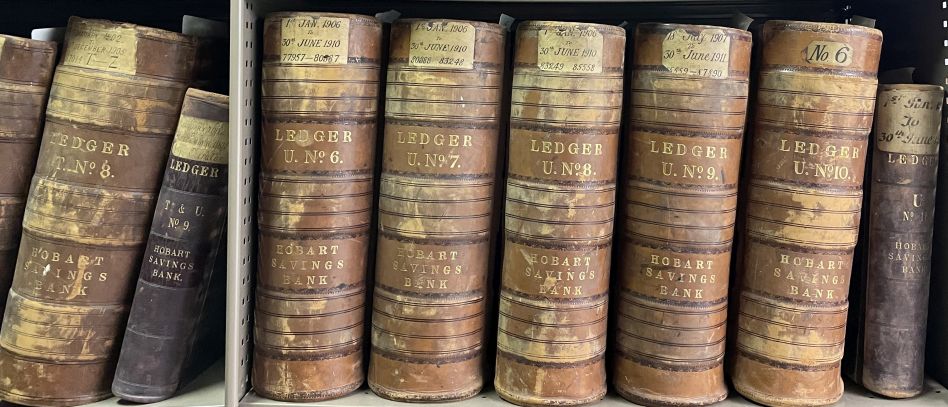
The State Library and Archive Service is issuing a challenge to Tasmanians to read five different examples of nineteenth century handwriting from our Heritage Collections, each featuring a different set of records held in the State Archives.
Just to recap:
Your Transcription Challenge
This note has multiple parts to it, with writing in all directions. This challenge focuses only on the writing in the centre of the page, and not the marginalia. This is a challenging transcription that gives two very different messages to the reader…

The Answer
H.M.S ships ‘Erebus’ and ‘Terror’ wintered in the Ice in lat. 70 05′ N., long. 98 23′ W. Having wintered in 1846–7 at Beechey Island, in lat. 74 43′ 28″ N., long. 91 39′ 15″ W., after having ascended Wellington Channel to lat. 77°, and returned by the west side of Cornwallis Island. Sir John Franklin commanding the expedition. All well.
Historical background: The Victory Point Note
In 1859 William Hobson discovered a note in a cairn on King William Island. Hobson was part of a group who were searching for any news of Sir John Franklin and his crew, who at this point had been missing in the far North of Canada for more than ten years.
The note bought news of the expedition, and of Sir John Franklin. The expedition consisted of two ships the HMS Erebus and HMS Terror and their crews, which had been tasked with trying to locate the North-West Passage – the elusive sea-route between the Atlantic and Pacific Oceans.
There are two clear parts to the note is written on a stock form for cached correspondence – requesting delivery to the Secretary of the Admiralty upon discovery. The first part completes the form and details that both ships were safe, having wintered at Beechey Island between 1846 and 1847. Sir John Franklin was still in command and most importantly all is described as ‘well’.
The second part of the note scrawled in the margins of the first tells a radically different story. It explained that John Franklin and 24 crew members had died and Crozier and Fitzjames had taken over leadership of the expedition. Finally, it states that they were intending to leave the next day in an attempt to reach civilisation, upon a march which at this point seemed to be their only hope of survival.
Historical background: Sir John Franklin
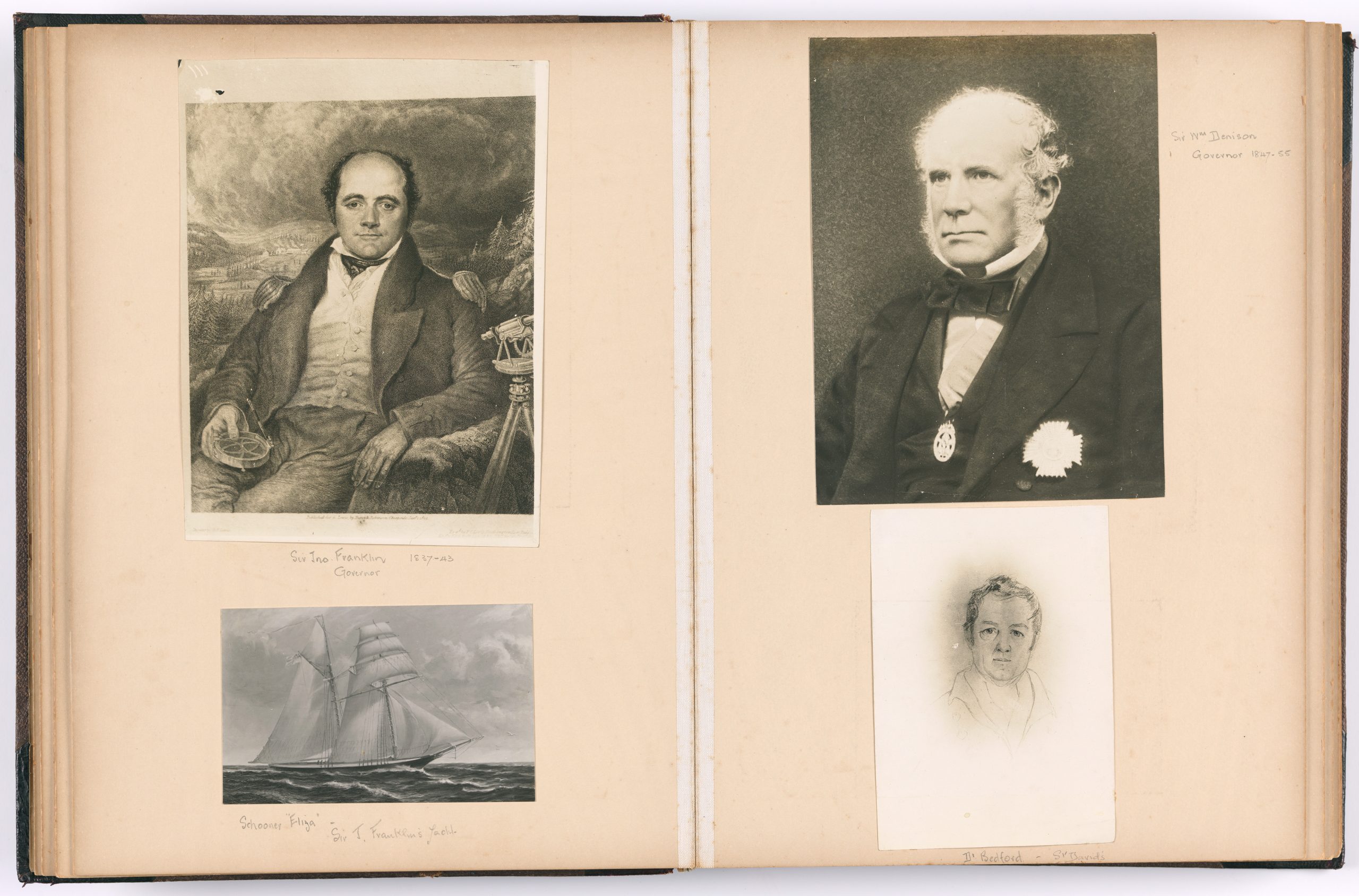
Sir John Franklin was born to a well-off family in Lincolnshire, England in 1776. From an early age he expressed a fascination with the ocean and the navy – and after initially opposing his desire to go to sea, his father purchased him an appointment in the Royal Navy on board the HMS Polyphemus, a 64-gun third-rate ship of the line. He saw action in the Battle of Copenhagen, in which HMS Polyphemus was part of Admiral Horatio Nelson’s Squadron.
Following this he achieved the rank of Midshipman and from 1801 he joined Matthew Flinders, a relative, on the HMS Investigator, a 334-tonne sloop. The ship was to journey on an exploratory voyage to Australia. This experience with Flinders developed his passion for exploration and discovery – an enthusiasm which would influence him throughout his life.
Franklin continued his career in the Navy. As a signal-midshipman he was on board the HMS Bellerophon at the Battle of Trafalgar in 1805. He continued to progress through the ranks and as a Lieutenant in 1818 he joined an Admiralty expedition to search for the North-West Passage (a route that would link the Atlantic and Pacific Oceans by sea – enabling a radical development in global shipping). The mission was not a success, but the experience put further fuel on the fire of Franklin’s passion for exploration.
Between 1819 and 1822 Franklin led an expedition, which because of the extreme conditions faced upon it, created the legend of him being ‘the man who ate his boots’. It was known as ‘The Coppermine Expedition’ – a tale of hardship, death, and (rumours of) cannibalism – the aim of which was the mapping of the North-Coast of Canada. The expedition, and the extremities that the group faced, led to the deaths of eleven of the group of twenty, and captured the public imagination. Upon his return to England Franklin received his commission as Captain.
In 1825 he continued to lead a second expedition to explore the wild North – this one known as ‘The Mackenzie River expedition’. Although less dramatic than the previous journey, the expedition was significant in developing understanding of Canadian geography – and saw Franklin rewarded with a knighthood.
In a more personal development John Franklin married Jane Griffin on the 5th of November 1828. She was Franklin’s second wife – his first, Eleanor Anne Pordern, a poet, died of tuberculosis in 1825. Born in London in 1791 Jane’s background allowed her a rounded education as well as experience travelling in Europe. An enthusiastic and motivated individual she had a keen interest in culture and science.
The 1830s were a difficult time to be a sailor, even one with Franklin’s considerable success. A long period of peace saw the number of roles available in the navy dramatically reduced. After spending some time on active-duty Franklin faced a situation in which there wasn’t much call at sea for the expertise and experience that he could provide. Given this situation he accepted a role as the Lieutenant Governor of Van Diemen’s Land.
In Tasmania
In 1837 Sir John Franklin followed from George Arthur as the Lieutenant Governor of Tasmania. General assessment of his success in the role was mixed. His lack of experience as a politician, combined with working alongside the various conflicting interests of the strong and powerful, provided him with little chance of major success in the colony. He was quite popular with the people – but faced difficulties, often due to the machinations of the various factions wrestling for control. He worked hard to introduce some of his more progressive ideas to the populace, developing an environment in which cultural, artistic, and educational pursuits were given greater value. He was instrumental in establishing a secular public school system in the colony. He created the Tasmanian Natural History Society. Lady Jane worked to develop higher studies and went so far to have the classical temple ‘Ancanthe’, built below the mountain in Lenah Valley. Both Franklin’s were inspired by travel within the colony and encouraged further exploration.
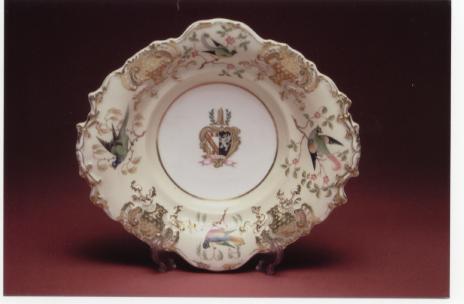
In 1843 Franklin’s lost his position as Lieutenant Governor. John Montagu, the Colonial Secretary, had taken against Franklin from the start of his time in the State. Montagu was part of a clique known for the loyalty to the previous governor, George Arthur. After tensions between the two developed, Montagu was removed from his position. He appealed to England against this, after which Franklin was ‘Censured and Recalled’.
A Return to Exploration
Franklin was searching for vindication after his time in Tasmania. At the age of 59 he embarked on his final expedition, once again to the Arctic region. The Admiralty had decided to continue the search for the North-West passage. Sir John Barrow, the secretary for the Admiralty placed the discovery of the passage high on his agenda. Sir John Franklin was not his first choice to lead the mission but became the commander due to the unavailability of preferred individuals, lack of interest from the selected candidates, and pressure from high places.
The expedition consisted of two ships carrying 129 men. The three-masted HMS Erebus and HMS Terror had both originally been ‘bomb ships’, designed as platforms from which to launch mortars upon their targets. The boats were heavily modified for the journey to the Arctic – with extra reinforcement to protect them from the ice they were sure to encounter. They also had steam power. In addition to propelling the vessels, with a 25-horsepower engine, the technology was designed to assist in heating them – and even to distribute fresh water. The ships were well stocked with supplies – Including pickled vegetables, salt pork, tea, and most importantly 3600 gallons (or more than 16000 litres) of overproof Navy rum! (Potter, Finding Franklin: The Untold Story of a 165-Year Old Search, p.54) These standard provisions were supplemented with a large amount of tinned food. The cutting-edge technology combined with ample supplies, must have been confidence building and reassuring for the crew members as they prepared to disembark.
The crew included a number of experienced sailors. Captain Francis Crozier was from Country Down in Ireland. Like most in his position, he joined the Navy when he was very young. He progressed steadily through the ranks and prior to the expedition of 1845 he had much experience of both military and exploratory operations. Crozier took a keen interest in scientific discovery, specifically related to astronomy and magnetism, and was a member of the Royal Society. Between 1839 and 1843 he travelled with James Clark Ross on his Antarctic expedition. During this journey he was made Captain of HMS Terror – a role that he reprised for the expedition of 1845 (David Murphy, “Crozier, Francis Rawdon Moira”, Dictionary of Irish Biography (2009)
Commander James Fitzjames was another well seasoned Naval officer. Originally, he had been one of the candidates that Sir John Barrow wanted to lead. His background was somewhat mysterious – he was illegitimate and had been adopted. He was known for his bravery, having been wounded during the First Opium War. In addition to this military experience, he had also embarked on exploratory expeditions – notably the Euphrates Expedition that, amongst other things, involved transporting ships across the mountains of Northern Syria. Fitzjames was to be Franklin’s second in command aboard HMS Erebus.
The fate of the Expedition
The Ships left on the 19th of May 1845 to much fanfare and excitement. They first travelled to Greenland where they stopped for supplies, a journey that took around a month. In late July 1845 they were seen by Whalers in Baffin Bay. This was to be the last time that the expedition was ever sighted by Europeans.It does seem certain that there was further interaction with the indigenous population. After this there were no further reports – aside from what was shared in the Victory Point note. It is understood that the ships continued to Beechey Island and following this to King William Island – where they were to remain. From here on detail becomes vague. The ships were locked in the ice. There they remained until April 1849 when they were abandoned by the remaining sailors. The Victory Point note states that Franklin died on the 11th of June 1847, and that command was taken over by Crozier and Fitzjames. More than 20 other crewmen died before the ships were deserted. The rest of the crew tried to reach civilisation – and as far as is known all were lost.
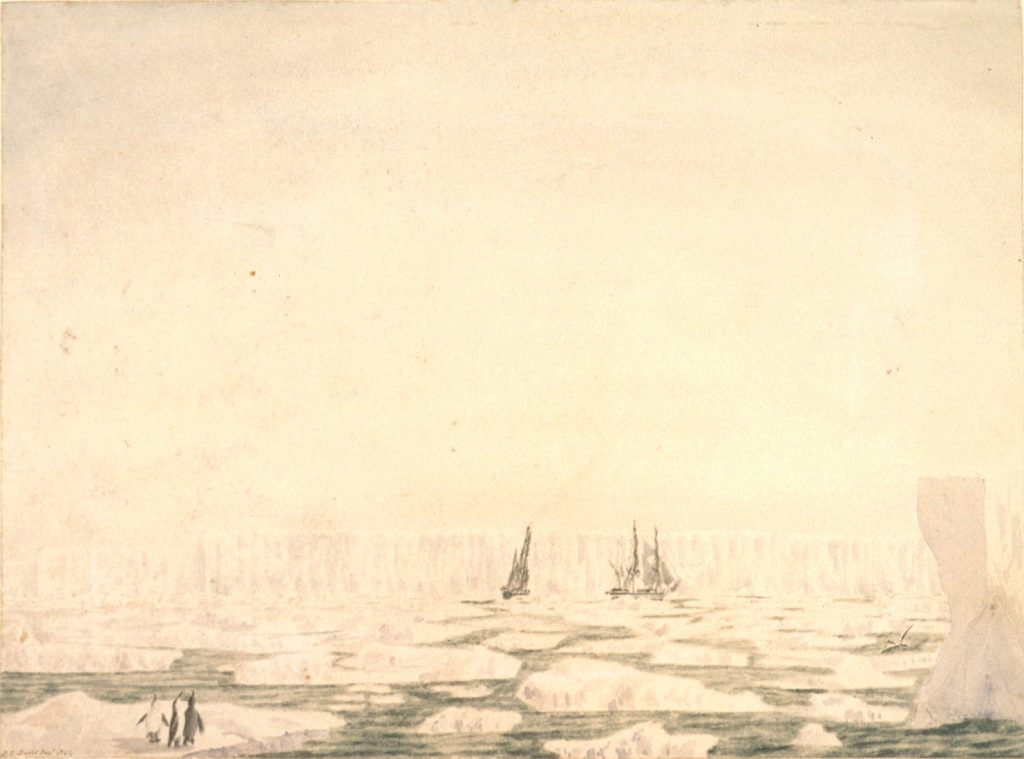
Many search and rescue missions were conducted to try to locate the lost expedition. Lady Jane Franklin exerted her considerable influence to discover the fate of her husband and his crew. The searches faced many of the same hardships that had beset the original group – and ultimately the research conducted upon them led to the development of knowledge of the Arctic waterways that had been the original mission of Franklin’s Expedition. John Rae, a Hudson Bay fur trader shared details of the fate of the expedition that he had sourced from local Innuit. These details included reports of cannibalism – and caused great upset on their release. The discovery of the Victory Point letter gave some resolution to those left behind. In later years academics and archaeologists continued to focus on the mission. In 2016 the wrecks of HMS Erebus and HMS Terror were located. Research into the mystery of exactly what occurred upon the Expedition continues.
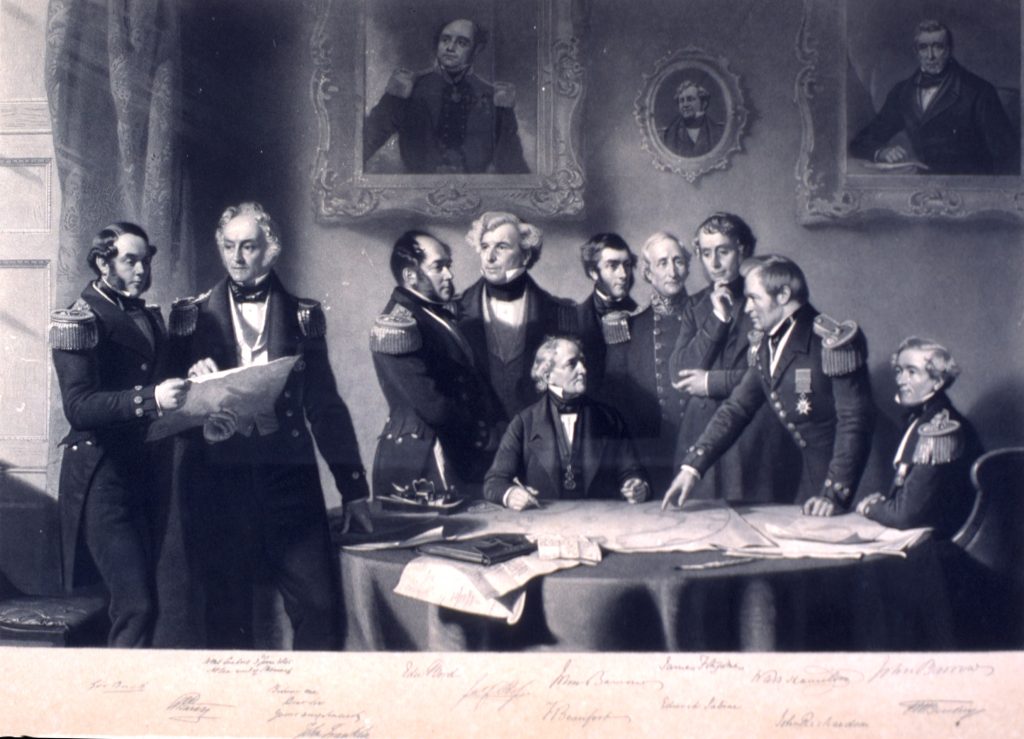
In Hobart Today
Many Hobartians have spent time in Franklin Square – a leafy central park, convenient meeting location, and departure point for local bus services. The square was named in honour of Sir John Franklin in 1860. The statue was designed by John Noble, who also created a similar work that is displayed in London. The statue has an inscription, from the epitaph of Sir John Franklin by Alfred, Lord Tennyson – whose words may serve as a logical end to this brief introduction to the life of Sir John Franklin:
Not here! The white north hath thy bones and thou
Heroic sailor soul
Art passing on thine happier voyage now
Toward no earthly pole
What is held in the State Library and Tasmanian Archives Collections?
The story of Franklin, Erebus, and Terror has long been a subject of fascination. Many books, both fiction and non-fiction, have been written (and many more will be) on the Expedition. I was discussing this blog with a friend when he proudly shared a tattered tome about the lost sailors, featuring numerous macabre illustrations, that he had treasured from a young age. Something about the disappearance captivates people – and the recent discoveries have only served to heighten this.
The library holds diverse resources on the subject – ranging from original materials from the era to DVDs of popular television shows speculating on the events. Rather than detail everything available from the library I’ve tried to detail some of the items that have captured my imagination – and that I have enjoyed engaging with!
Michael Palin – Erebus
Michael Palin is rightfully legendary for his contributions to comedy and film. In this book he focuses his wit and wisdom on recounting the biography of the ship HMS Erebus. He describes the Erebus from its initial construction and details the journeys it took leading up to the Franklin Expedition. He goes into detail on the Expedition itself and in the location and rediscovery of the ship. Palin places himself in the story, recounting his own experiences with the Ship. A well-researched and approachable history – highly recommended!
This is available as a hardcopy, as an eBook, and as an Audiobook.
The Terror by Dan Simmons
This fictional account of the fate of the Sir John Franklin’s expedition by Dan Simmons, a North American author well known for his works in the horror and science-fiction genres. At more than seven hundred pages the novel allows Simmons to speculate about the life of the crews of the HMS Erebus and HMS Terror on the ice. He introduces indigenous characters and details their interaction with the sailors. He also details a supernatural force – that becomes the deciding factor in sealing the fate of the expedition. The novel creates a very genuine tension, and although it is fiction it gives a real understanding of life locked in the ice. The length may seem a little daunting – but the captivating story and attention to period detail make this an enjoyable, but disconcerting, read.
Produced by AMC this television program translates Dan Simmon’s novel to the small screen. It features many well-known actors, excellent attention to period detail, and some truly horrifying moments. The big budget production uses impressive visual effects that create a bleak picture of how life on board the ice-locked HMS Erebus and HMS Terror may have been. Ciarán Hinds gives a solid performance as a, perhaps, overly handsome Sir John Franklin.
Frozen in Time: The fate of the Franklin Expedition – Owen Beattie and John Geiger
A forensic analysis of the expedition that features a solid historical introduction. The details of how the research conducted in the early nineteen eighties and the difficulties faced by the scientists are impressive. The book does feature images of the exhumed bodies, and because of this is not recommended for everyone, but is an intriguing read for those with an interest in forensic archaeology and exploration. It does much to develop the stories of the sailors on Franklin’s ships, as well as to detail the experience of exploration in more recent years.
Finding Franklin – Russell A.Potter
Russell Potter is an American academic and long-term scholar of all things Franklin. In this work Potter looks at the lost exhibition as well as the multitude of searches that have taken place since. He highlights the importance of Inuit accounts in piecing together the story. A popular piece of non-fiction – the book gives an overview of the research up to now, as well as providing a solid embarkation point for those keen to research further.
Potter also has a blog which is well worth exploration for Franklin Expedition related content.


thank you – another good read.